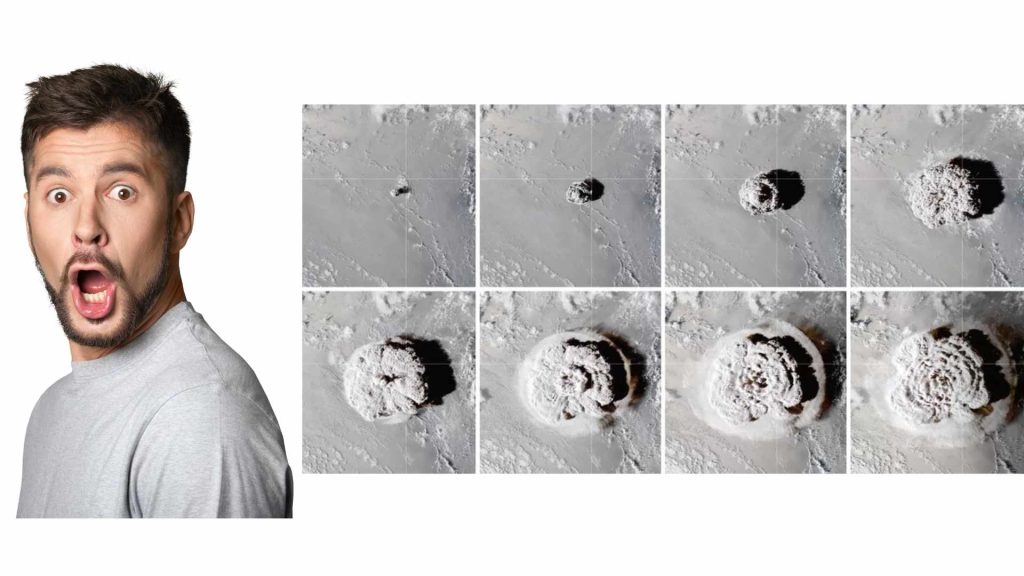
Scientists described a massive “magma hammer” that slammed the underside of the Tonga volcano and created a spectacular volcanic eruption in January.
Thank you for reading this post, don't forget to subscribe!Based on an analysis of seismic waves, four individual events occurred within a five-minute period beneath the submarine volcano.
Each of these blows had a force of a billion tonnes.
Later, the Hunga Tonga Hunga-Ha’apai produced the biggest atmospheric explosion, far bigger than any nuclear bomb test after World War II.
The explosion moved some 10 cubic km of rock, sediment, and ash.
Most of it exits through caldera, the volcano’s mouth, to shoot straight up into the sky, just like a “shotgun blast.”
A scientist from the University of Houston, Dr. Yingchai Zheng, explained the magnitude 5.8 seismic waves occurred in just 10 minutes.
A pulse of magma moved up, hitting the base of the caldera and creating a massive volcanic eruption.
Ash from Hunga Tonga has traveled 57km above the Earth’s surface.
However, new data indicated the disturbance went much higher than that – all the way to space.
Dr. Larry Paxton, from Johns Hopkins University, said there is a strong absorber at an altitude above 100km.
That spot was as big as Japan, Germany, or Montana.
Furthermore, the absorber from the volcanic eruption was water vapor, estimated somewhere between 20,000 to 200,000 tonnes.
Read also:
Deadly Storm System Barrels Across US, Spawning Tornadoes and Blizzard-like Conditions
